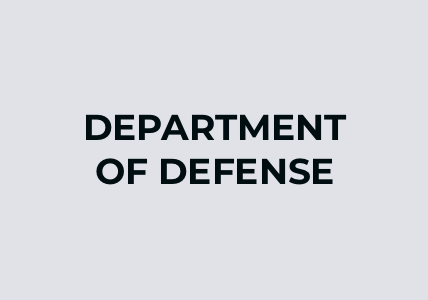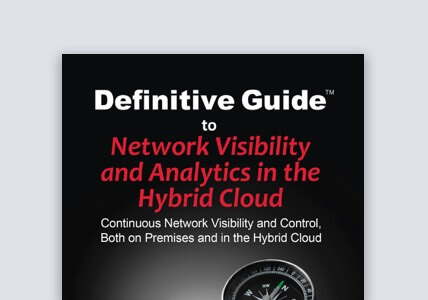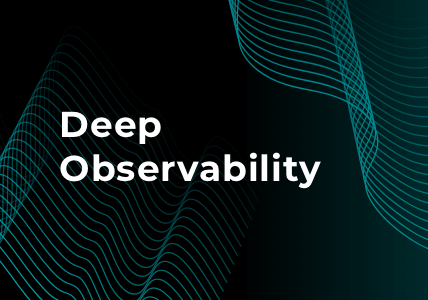Observability vs. Monitoring: How to Differentiate?
As IT infrastructures have evolved beyond on-premises data centers to include the private cloud, public cloud, hybrid cloud, and multi-cloud architectures industry, so has the need for effective monitoring and observability strategies and tools. While each offers different insights, people often confuse the two and even use the terms for the same things. There are a few notable differences, but they work together to identify areas of weakness within a system and provide information to troubleshoot the issue. Observability is especially important, as monitoring does not work on a system that is not observable. Read on to learn more about observability vs. monitoring and why you need to utilize them both.
Observability vs. Monitoring: What Are They?
Even though the terms are often used interchangeably, there are some important differences between observability and monitoring. Both systems work together to keep your organization’s data, systems, and security perimeter safe, but how do they do that? To understand the differences and benefits, you first need to know what these two types of tools are designed to do and how they can be used to keep your IT infrastructure running smoothly.
Observability
Observability focuses on the output of your system to assess the system’s overall state. If there are problems within your infrastructure, any abnormalities can help point you in the direction of what has gone wrong, which is why observability is crucial. Using different logs and metrics, as well as specific algorithms, you can monitor the health and status of your IT systems and catch problems before they escalate into something more serious.
Monitoring
Monitoring, on the other hand, focuses on collecting and analyzing data from the system about how things move through the different modules. While observability helps identify where the problem is, monitoring is what alerts you to the issue in the first place. One facet of monitoring that helps make it easier to analyze the data that has been collected is the use of dashboards displaying the different metrics. However, this only works if you track the right metrics. This is why monitoring a more complex system can be more challenging; it uses predefined metrics and logs to track trends, but the more complex a system is, the harder it is to predict.
The 4 Pillars of Observability
Four main pillars of observability are used to track the health of your system, including logs, metrics, events, and traces, often referred to using the acronym MELT. To provide the clearest picture of what is happening within the system and where any issues are originating, each of these gathers information about a different aspect.
Logs
Perhaps the most straightforward of the four pillars to describe, logs are time-stamped records of discrete events that happen within an application or database or on a network. Logs are typically the first data source that network and security professionals will refer to when any kind of unexpected event has been identified. Because of this, logs are often targets for bad actors looking to disguise their steps as they attack a network.
Metrics
Unlike logs that record specific moments or events, metrics are measurements that are taken over time — for example, the time taken to respond to a specific query. These metrics make it possible to identify performance issues such as bottlenecks that need to be remedied to meet service level or user experience goals.
Traces
Software developers build traces into their application code to identify where performance or other issues have occurred within their application. As such, traces are typically used within the development and testing process but can also be very useful to network and security professionals who need to identify problems in production applications and then work with developers to solve these problems.
Events
Events are any action that occurs at the application or system level on a network: for example, “user X clicked a radio button” or “a sysadmin updated setting Y on a server.” There can be millions of such events every day in large-scale environments, which means that event data can be difficult and slow to query. However, it is important to have access to this data for security forensics.
What Is the Difference Between Observability and Monitoring?
The simplest way to understand observability vs. monitoring is to think about the purpose of each: Monitoring is intended to alert you to any problems within the system, and observability indicates what caused the problem.
As part of the discussion about these two strategies, you will likely also hear about telemetry and application content performance monitoring (APM) information, but how do they play into the process? Telemetry refers to collecting data across different systems. APM information is very similar to observability, but it offers more of a surface-level view of system failures instead of an in-depth analysis of abnormalities within the output.
Observability and monitoring work best when used together, and there are a few key differences between the two that must be understood to grasp how they complement each other. Below are some of these differences and what they mean.
- Collection vs. context: Monitoring is all about collecting data to spot-check your systems. Observability, however, offers context for the collected data that allows you to take action.
- The characteristic vs. the act of observing: Observability refers mainly to the characteristic of being able to observe what is happening, whereas monitoring is the act of doing so.
- Process vs. potential: As with characteristic versus act, observability is all about the potential of a system to be monitored throughout the process. Monitoring is the process of using that potential to find events and track what is happening.
- Single plane vs. traversable map: The act of monitoring takes place on a single plane, in that all you have to do is set up rules for when you receive alerts about events. Observability is more involved and requires a traversable map that offers context to interpret the data that you collect.
- Key criteria vs. complete assessment: Observability is a key criterion for application development and offers insight into the system. In this way, observability provides a complete assessment of the operations and where to focus efforts when making improvements.
- Understanding vs. action: Before you can take action to fix a problem, you have to understand the state of the system, which is where monitoring comes in. Once you have an understanding, you can put observability into practice by acting based on the data you have gathered.
- Tracking vs. knowledge: Monitoring is the tool that you use for tracking performance. Observability is the knowledge that tells you what to monitor so that you can gather the most useful information.
- Wide vs. deep: If you are looking for a wide view of what is happening in your system, you will want to focus on monitoring. Observability, on the other hand, offers a deeper insight into the health of the system and all of its components.
- Limited vs. sustainable: It is necessary to continue monitoring the system over time as adjustments are made, and observability offers a sustainable approach.
Each of these differences boils down to one thing: what versus why. Monitoring strategies tell you what, while observability tells you why.
Differences at a Glance: Observability vs. Monitoring
Monitoring | Observability | |
Definition | Alerts you to any problems within the system. | Indicates what caused the problem and why it happened. |
Area of Focus | Act of collecting data to spot-check systems. | Offers context for collected data. |
Traceability | Focused on real-time observation. | Concerned with analyzing past events comprehensively. |
View | Takes place on a single plane, setting up rules for receiving alerts about events. | Requires a traversable map that offers context to interpret collected data. |
Understanding | Aids in understanding the state of the system, allowing action to be taken. | Put into practice by taking action based on data gathered in monitoring. |
Depth | Provides a wide view of what is happening within the system. | Provides a deep view into the health of the system and its components. |
Sustainability | Continuously monitors over time as adjustments are made. | Offers a sustainable approach to monitoring the system over time. |
Conclusion | Tells you the what. | Tells you the why. |
Why You Need Both Monitoring and Observability
The terms observability and monitoring are often used interchangeably because the two work so closely together. They complement each other and serve different purposes that combine for optimum efficiency and results from your IT software development and operations strategies. Today’s modern enterprises need to utilize both monitoring and observability to ensure that all IT systems are functioning properly and that any breakdowns in the system are caught quickly.
Unleash Cloud Potential with Deep Observability
Both observability and monitoring play a large role in the health of your IT infrastructure and can help you protect sensitive data. Gigamon offers deep observability, which takes observability further by combining network intelligence with metric, log, event, and trace data. This extends the capability and value of observability tools by enabling them to address security use cases.
Learn more about deep observability and how it can benefit your organization today.
Featured Webinars
Hear from our experts on the latest trends and best practices to optimize your network visibility and analysis.

CONTINUE THE DISCUSSION
People are talking about this in the Gigamon Community’s Security group.
Share your thoughts today








 Dan Daniels
Dan Daniels